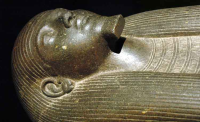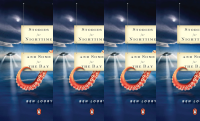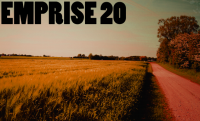A Review of Ryan Call’s The Weather Stations
Reviewed by Melissa Reddish
Caketrain Press, 2011, 210 pages
In Season Six of Doctor Who, one of the most highly anticipated episodes was written by Neil Gaiman, the author known for his Sandman series along with his novels like American Gods and Coraline. In this episode, the Doctor and his companions Amy and Rory crash land on an asteroid in an alternate universe. During this episode, we learn that the asteroid is a sentient planet that has trapped the soul of the TARDIS (Time and Relative Dimension in Space, or the blue police box that is a time machine) in a woman.
This is a perfect example of what Gaiman does so well: personify an abstract concept, such as Death, Desire, and Dream in Sandman and media and celebrity in American Gods. Of course, this only works if an author can figure out what makes an abstract concept human. In the case of the TARDIS, we see her child-like acquisition of language and her relationship with the doctor, one that quickly resembles an old married couple who bicker about which way the TARDIS’s door opens and who stole whom. We can also see how a time machine has trouble inhabiting a body that experiences time in a linear fashion, as she constantly references things that will happen in the future. (Her first words are goodbye and her last are hello.)
All of this is a long way of introducing Ryan Call’s superb collection of stories, Weather Stations, in which the weather is not just a convenient backdrop but often a living organism that acts as metaphor and antagonist. In many of the stories, the weather is a hostile, unpredictable force that characters must constantly struggle against. Some characters attempt to wield the destructive force as a weapon (“Anvil”), while others patch the crumbling holes in the sky (“The Architect’s Apprentice”), and still others build low-lying structures to avoid infringing on the weather’s space (“Windswept”).
Impressively, Ryan Call uses meteorological terminology without becoming repetitive or requiring the reader to get a degree in meteorology. In “The Walker Circulation,” people take on the characteristics of weather patterns— a cool, rainy logic or a hot, sandstorm passion. When the little boy Walker is born, his parents “anxiously shook him into the atmosphere of the living room, let him develop, watched him convect amid the cushions of the couch.” Call also provides enough specific detail to render these worlds believable, especially with regard to distinct weather patterns. Later on, Walker’s parents discover “the violent origins of lightning and thunder,” which are the consequences of “his parents’ colliding fronts.”
But like the Doctor Who episode, what makes these stories so successful is how achingly human they are. The hyperbolic weather patterns allow Ryan Call to investigate essential human relationships in new ways. In “I Pilot My Bed Deep Into the Night,” the young narrator watches his brother fly off to war and must deal with the fear and uncertainty that comes from watching a family member leave to fight a conflict they may not return from. In “The Walker Circulation” two parents must come to terms with the imminent and unavoidable death of their child, while in “Age Hung Us Out to Dry,” two children must deal with the disappearance of their father. In all of these stories, the weather becomes metaphor for all of those unpredictable forces in our lives that render our relationships asunder: time, war, emotional distance, death. And it is this fact that gives these stories such emotional resonance. Just like Sarah Rose Etter, another young author recently published by Caketrain, Ryan Call is someone to watch out for, a writer whose staggering emotional maturity and depth can only deepen with time.
–
Melissa Reddish is a contributing reviewer for Emprise Review









